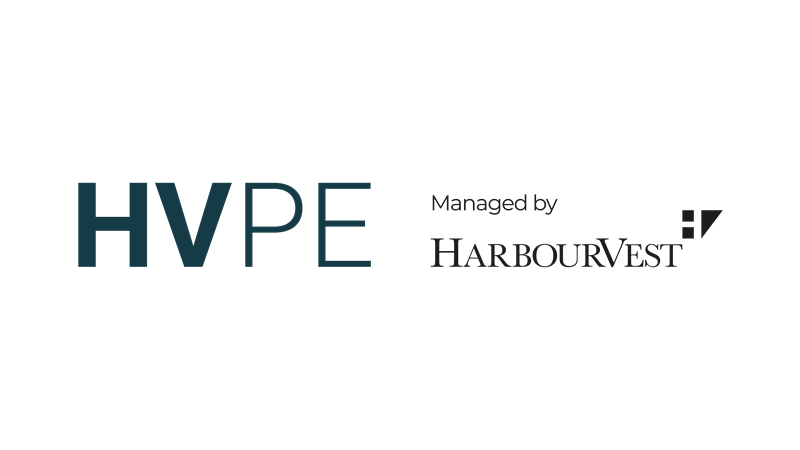New Book From Man Group Senior Execs Shines A Light On Risk Management
Strategic Risk Management: Designing Portfolios and Managing Risk is a new book authored by Campbell Harvey, Distinguished Professor of Finance at Duke University and Man Group advisor; Sandy Rattray, CIO, Man Group; and Otto Van Hemert, Director of Core Strategies at Man AHL. The trio make the case for how a variety of quantitative techniques can be integrated at the investment strategy level to reduce the severity of equity market drawdowns. AlphaWeek’s Greg Winterton spoke to Van Hemert to learn more about the book.
GW: Otto, let’s start with the obvious. Why write this book at all?
OVH: Well, the book wasn’t actually planned in advance. Over time, we have written different papers that ended up as the individual chapters of the book; there was a common theme to all of the papers which is that they all had to do with strategic risk management, so it felt natural to bundle them. Producing an analysis in a paper or a book format requires you to type up your thoughts more precisely – which means that you go through the process again and get a deeper understanding of the topics which also educates ourselves.
GW: There is a lot of maths in the book, which is understandable because you have to show your working. But statistics isn’t every investor’s first language. For those who get turned off by numbers and equations, why is the book still worth a read?
OVH: I used to be an academic at NYU Stern. The way you operate in academia is that you write up your analysis in such a way that in principle, someone can replicate the results. We had to stick to that high bar; the idea that you can replicate what we do, and formulas are the best way to do that. It’s a necessity, but we kept it to a bare minimum and most of the more complicated stuff is left to the footnotes. We think it’s very accessible and we wrote the book with that in mind.
GW: Chapter 1 shows an evangelism for trend following delivering ‘crisis alpha’. Most associate the latter term with equity market drawdowns. That’s not entirely true, is it?
OVH: No. Having studied trend over the years, the feature that shines through is that trend benefits when there is a big change in the world and there needs to be some time to reflect the new reality; that’s when this strategy tends to make money and an equity market sell-off is just one example of that. But another example is that when inflation rises, bond markets go down as yields reflect the higher inflationary environment. Trend following does well in those environments, too, because it’s a change in the environment – prices tend to trend during the adjustment period and trend following strategies benefit from that. Trend is applicable to any asset class.
GW: Trend following’s protective characteristics are well understood by many investors. In Chapter 2, you analyse other strategies which have protective characteristics; what’s the key takeaway here?
OVH: We look at passive and dynamic strategies in the book. There is a clear trade-off between reliability of the defensiveness and affordability in passive strategies in terms of long-term performance; one the one hand, you have something reliable, like buying put options every month, which is costly in the long run. On the other hand, bonds are less reliable as a defensive strategy, but exposure is more affordable than put options. But for dynamic strategies, we’ve discussed how trend works, and allocating to quality stocks is the other one. Both concepts to a degree are known, even more now, but the devil is in the detail. There is a lot you can do right or wrong in trend or quality. Faster trend following strategies are more defensive, and in quality stocks, profitability does well. Sometimes people put the low beta stocks in the ‘quality’ bucket, but they don’t really have defensive characteristics.
GW: The first 2 chapters seem almost like building blocks – incorporating strategies which are multi-directional into a broader portfolio. That’s not revelatory, but what is arguably ‘next level’ is volatility targeting, which you discuss in Chapter 3. Why should investors care about this?
OVH: Predicting returns is difficult, but predicting risk is a bit less so. Volatility tends to cluster, and you can make use of that predictability. We advocate for targeting volatility, which means reducing some of your notional exposure to an asset class in periods of higher volatility and adding exposure in periods of lower volatility. This has the effect of smoothing volatility over a time period.
GW: Rebalancing is a constant in portfolio construction theory but in Chapter 4 you have a specific view; tell us about that.
OVH: Rebalancing back to a target mix is essentially buying recent losers and selling recent winners. In a traditional stock/bond portfolio mix, if equity prices fall, then you’re buying stocks to get back to a 60/40 ratio. This means you are going against the trend and it’s a reversal-type strategy. But in times of distress, markets tend to trend, so when you buy a market that is falling, it’s like catching a falling knife. Our proposed strategy rebalancing method is simple – you hold off rebalancing until the negative trend has run its course. If equities are in a freefall, you don’t buy them back to the target mix, you wait until the signals point to a lower chance of prices falling further.
GW: Maximum drawdown is a favourite of investors when it comes to sacking a manager – i.e., they cross a drawdown threshold, the manager gets booted. In chapter 5, you guys have figured out a way to ensure an investor a) doesn’t fire a good manager and b) can identify a bad manager, and fire them before they lose money, haven’t you?
OVH: The key thing here is to recognise that you’re working with imperfect information. You don’t know a manager is good or bad but you’re inferring it from the return stream. You need to recognise that you’re going to make mistakes and fire a good one and keep a bad one; we call these type 1 and type 2 errors. But we want to minimise that amount of times we make this mistake. When you don’t know the type of manager (good or bad), but you do know the type doesn’t change over time, the best thing is to use the entire history of returns, and that’s the most efficient metric, not the drawdown. That said, it’s very different if you don’t know the type of manager and moreover a manager can change from good to bad without you directly observing that. The strategy might get crowded, a key person leaves, etc. Then, the drawdown is good to use then because you focus on the more recent period and whether the drawdown you run into more naturally lines up with a sudden change of manager type. The key takeaway as we show is that there is a bigger picture to this than just the drawdown. This is a question many allocators face on a daily basis and therefore this has been one of the more popular chapters.
GW: The first 5 chapters of the book are all based on the premise that managers – and in turn investors - should incorporate risk management at the strategy level, something quant hedge fund managers do by design. Chapter 6 addresses a common frustration amongst quant hedge funds, which is a belief in investor-land that there is no evidence to support the view that systematic strategies perform as well as their discretionary cousins. What’s important here from a risk management perspective?
OVH: If you invest in systematic hedge funds, or discretionary hedge funds, it’s important to know what type of risks you’re exposed to. We look at aggregated indices of managers and find that both systematic and discretionary load up on certain risk factors. In our view, that’s well understood for systematic but less understood on discretionary managers. Many discretionary equity hedge funds still have a positive beta to the equity market. If you form an index of those managers, they have fairly chunky exposure to that. The data doesn’t support the view that systematic managers don’t perform as well as discretionary managers. On the systematic side, you get positive convexity, especially with systematic macro in particular.
GW: You actually finished compiling the book before the equity market drawdown of February and March 2020. But you were proved right; Chapter 7 shows how your portfolios – based on the findings in the first five chapters - reduced the drawdowns. Are you feeling smug?
OVH: I wouldn’t say smug. We were pleased to be able to include some out-of-sample-data in the book. Some of the original papers underpinning chapters in the book were written in 2016 and 2017. That means we had some genuine out-of-sample evidence when there was the drawdown of the fourth quarter of 2018 and particularly also Q1 of 2020 with an even bigger equity market sell off. Many of the concepts we discuss in the book held up well. Volatility targeting really helped at the end of February last year as volatility went up quickly. You would reduce notional exposures in response to that and therefore have less exposure in the March sell off. Faster trend-following and quality profitability also worked, as did strategic rebalancing – holding off buying back equities at the end of February. In some ways, history did repeat itself; we studied 100 years of data in many cases and the Covid-induced sell-off shared enough similarities with previous drawdowns that our findings held up well.
GW: Finally, Otto, you’re donating the profits from the book to U.K.-based charity The Access Project. Tell us why you chose TAP.
OVH: We at Man Group are strong believers in equal opportunities. It’s important that people from different backgrounds are afforded similar opportunities. And we definitely like maths, and if someone with a strong aptitude for maths is from a background that holds them back, we want to help them. Some of our colleagues at Man Group do tutoring as part of our relationship with The Access Project. It’s an initiative that we’re very proud to support.
Otto Van Hemert is Director of Core Strategies at Man AHL
Strategic Risk Management: Designing Portfolios and Managing Risk is available now. Profits will go to The Access Project, https://www.theaccessproject.org.uk/.
© The Sortino Group Ltd
All Rights Reserved. No part of this publication may be reproduced, stored in a retrieval system or transmitted in any form or by any means, electronic, mechanical, photocopying, recording or scanning or otherwise, except under the terms of the Copyright, Designs and Patents Act 1988 or under the terms of a licence issued by the Copyright Licensing Agency or other Reprographic Rights Organisation, without the written permission of the publisher. For more information about reprints from AlphaWeek, click here.







